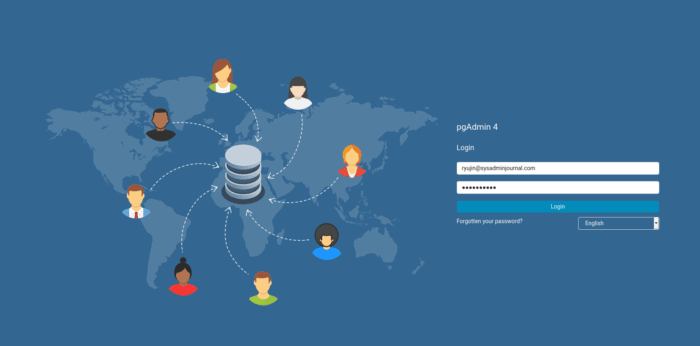How To Install pgAdmin on Manjaro

pgAdmin is a powerful and open-source administration tool for PostgreSQL, one of the most advanced open-source relational databases available. For those using Manjaro, a flexible and user-friendly Arch Linux-based distribution, setting up pgAdmin can significantly streamline database management tasks. This comprehensive guide provides step-by-step instructions on how to install pgAdmin on Manjaro, ensuring a smooth and efficient setup. The focus will be on clear, concise instructions suitable for both beginners and experienced users.
Managing PostgreSQL databases often requires a graphical interface that simplifies tasks such as creating databases, running queries, and managing roles and permissions. pgAdmin provides this interface, making it an indispensable tool for database administrators and developers alike. This guide aims to address the common challenges faced during the installation process, offering multiple installation methods to suit different preferences and technical expertise. By following this guide, you will be able to leverage pgAdmin to efficiently manage your PostgreSQL databases on Manjaro.
Whether you prefer using Python’s pip package manager, building from source, or utilizing Docker containers, this guide covers all major installation methods. Each method is detailed with specific commands, configuration steps, and troubleshooting tips to ensure a successful installation. Furthermore, this article emphasizes the importance of maintaining a secure and properly configured PostgreSQL environment, providing best practices for database management. Let’s dive into the details of installing pgAdmin on Manjaro.
Prerequisites
Before you begin the installation of pgAdmin on Manjaro, ensure that your system meets the necessary prerequisites. Proper preparation will help prevent common issues and ensure a smooth installation process. Key prerequisites include system updates, basic terminal knowledge, and the status of your PostgreSQL installation.
System Requirements
First, it’s crucial to have an updated Manjaro system. Regular updates ensure that you have the latest packages and security patches, which can resolve compatibility issues and improve system stability. To update your system, open the terminal and run the following command:
sudo pacman -SyuThis command synchronizes your package database and upgrades installed packages. It is recommended to reboot your system after the update to ensure all changes are applied correctly.
Next, having basic terminal knowledge is essential. The installation process involves running commands in the terminal, navigating directories, and editing configuration files. Familiarity with basic Linux commands such as cd, ls, sudo, and nano will be beneficial. If you are new to Linux, consider familiarizing yourself with these commands before proceeding.
Finally, verify the status of your PostgreSQL installation. pgAdmin is a management tool for PostgreSQL, so you need to have PostgreSQL installed and running on your system. To check the status of PostgreSQL, use the following command:
sudo systemctl status postgresqlIf PostgreSQL is not installed, you can install it using the following command:
sudo pacman -S postgresqlAfter installation, enable and start the PostgreSQL service:
sudo systemctl enable postgresql
sudo systemctl start postgresqlWith these prerequisites in place, you are now ready to proceed with the installation of pgAdmin on Manjaro. The next sections will cover various installation methods, providing detailed steps and troubleshooting tips.
Installation Methods
There are several methods to install pgAdmin on Manjaro, each with its advantages and disadvantages. This guide covers three primary methods: using Python’s pip package manager, building from source, and using Docker containers. Choose the method that best suits your technical expertise and system requirements.
Method 1: Python/pip Installation
The Python/pip installation method is straightforward and recommended for most users. It involves creating a Python virtual environment, installing necessary dependencies, and then installing pgAdmin4 using pip. This method provides a clean and isolated environment for pgAdmin, preventing conflicts with other Python packages.
First, create a Python virtual environment. A virtual environment is a self-contained directory that contains a specific Python version and its associated packages. To create a virtual environment, navigate to your desired installation directory in the terminal and run the following command:
python3 -m venv venvThis command creates a virtual environment named “venv” in the current directory. Next, activate the virtual environment using the following command:
source venv/bin/activateOnce the virtual environment is activated, your terminal prompt will change to indicate that you are working within the virtual environment. Now, upgrade pip to the latest version. Pip is the package installer for Python, and upgrading it ensures that you have the latest features and bug fixes. Run the following command:
pip install --upgrade pipWith pip upgraded, you can now install pgAdmin4. Run the following command:
pip install pgadmin4This command downloads and installs pgAdmin4 and its dependencies within the virtual environment. After the installation is complete, you need to configure pgAdmin4. Navigate to the pgAdmin4 directory within the virtual environment:
cd venv/lib/python3.x/site-packages/pgadmin4Replace “3.x” with your Python version. Next, run the pgAdmin4 setup script:
python pgAdmin4.pyThis script will prompt you to enter an email address and password for the initial pgAdmin user account. Enter the required information, and pgAdmin4 will start. The output will provide a URL to access the pgAdmin web interface, typically http://127.0.0.1:5050. Open this URL in your web browser, and you will be prompted to log in with the email and password you provided.
Method 2: Building from Source
Building pgAdmin from source provides the most control over the installation process. This method is suitable for users who need specific customizations or want to use the latest development version of pgAdmin. However, it requires more technical expertise and can be more time-consuming than other methods.
First, download the source code from the official pgAdmin website or GitHub repository. You can use the following command to clone the repository:
git clone https://github.com/postgres/pgadmin4Navigate to the pgAdmin4 directory:
cd pgadmin4Next, install the build dependencies. Building from source requires several dependencies, including Node.js, Yarn, and PostgreSQL client libraries. Install these dependencies using the following command:
sudo pacman -S nodejs yarn postgresqlAfter installing the dependencies, configure and build pgAdmin4. Use the following commands:
yarn install
yarn buildThese commands install the necessary JavaScript packages and build the pgAdmin4 web interface. Next, create a Python virtual environment within the pgAdmin4 directory:
python3 -m venv venv
source venv/bin/activate
pip install --upgrade pip
pip install -r requirements.txtThe requirements.txt file lists the Python dependencies required to run pgAdmin4. Finally, start pgAdmin4 using the following command:
python pgAdmin4.pyThis will start the pgAdmin4 server, and you can access the web interface in your browser using the provided URL.
Method 3: Docker Container
Using Docker containers is a convenient way to run pgAdmin in an isolated environment. This method eliminates the need to install dependencies directly on your system and provides a consistent environment across different platforms. To use this method, you need to have Docker installed on your Manjaro system.
If Docker is not installed, you can install it using the following command:
sudo pacman -S dockerAfter installation, start and enable the Docker service:
sudo systemctl enable docker
sudo systemctl start dockerNext, pull the pgAdmin4 container from Docker Hub. Use the following command:
docker pull dpage/pgadmin4This command downloads the latest pgAdmin4 container image. After the image is downloaded, you can run the container. Use the following command:
docker run -p 5050:80 -e "PGADMIN_DEFAULT_EMAIL=your_email@example.com" -e "PGADMIN_DEFAULT_PASSWORD=your_password" -d dpage/pgadmin4Replace your_email@example.com and your_password with your desired email and password for the pgAdmin user account. This command maps port 80 of the container to port 5050 on your host system and sets the default email and password. The -d flag runs the container in detached mode.
You can access the pgAdmin web interface by opening http://localhost:5050 in your browser. Log in with the email and password you provided.

Post-Installation Setup
After installing pgAdmin, some additional setup steps are necessary to ensure that it can properly connect to your PostgreSQL database. These steps include starting the PostgreSQL service, creating an initial database cluster, and configuring user accounts.
Database Configuration
First, ensure that the PostgreSQL service is running. If it is not running, start it using the following command:
sudo systemctl start postgresqlYou can check the status of the service using the following command:
sudo systemctl status postgresqlNext, create an initial database cluster. A database cluster is a collection of databases managed by a single PostgreSQL server instance. To create a database cluster, log in as the postgres user:
sudo -iu postgresThen, run the following command:
initdb -D /var/lib/postgres/dataThis command initializes a new database cluster in the /var/lib/postgres/data directory. After creating the database cluster, secure the PostgreSQL installation by setting a password for the postgres user. Run the following command:
psql -c "ALTER USER postgres WITH PASSWORD 'your_password';"Replace your_password with a strong password. Finally, configure pgAdmin to connect to your PostgreSQL database. Open pgAdmin in your browser and click on “Add New Server.” Enter the following information:
- Name: A descriptive name for the server connection
- Host:
localhostor127.0.0.1 - Port:
5432(default PostgreSQL port) - Username:
postgres - Password: The password you set for the
postgresuser
Click “Save” to create the server connection. You should now be able to connect to your PostgreSQL database through pgAdmin.
Troubleshooting
During the installation and configuration of pgAdmin, you may encounter various issues. This section provides solutions to common problems, including installation errors, permission issues, connection problems, and version compatibility issues.
Common Installation Errors
One common error is the “ModuleNotFoundError” when installing pgAdmin using pip. This error indicates that a required Python package is missing. To resolve this issue, ensure that you have installed all the necessary dependencies listed in the requirements.txt file. You can install the dependencies using the following command:
pip install -r requirements.txtAnother common error is the “pgAdmin4.py not found” error. This error occurs when you try to run the pgAdmin4 setup script from the wrong directory. Make sure you are in the pgadmin4 directory within the virtual environment before running the script.
Permission Issues
Permission issues can prevent pgAdmin from accessing necessary files and directories. To resolve permission issues, ensure that the postgres user has the necessary permissions. You can change the ownership of the pgAdmin directories using the following commands:
sudo chown -R postgres:postgres /var/lib/pgadmin
sudo chown -R postgres:postgres /var/log/pgadminThese commands change the ownership of the /var/lib/pgadmin and /var/log/pgadmin directories to the postgres user and group.
Connection Problems
Connection problems can occur if pgAdmin is unable to connect to the PostgreSQL server. To troubleshoot connection problems, first ensure that the PostgreSQL service is running and that pgAdmin is configured to connect to the correct host and port. You can also check the PostgreSQL logs for any error messages.
Another common cause of connection problems is the firewall. Ensure that the firewall is configured to allow connections to port 5432, the default PostgreSQL port. You can use the following command to allow connections to port 5432:
sudo ufw allow 5432Version Compatibility Issues
Version compatibility issues can arise if you are using an outdated version of pgAdmin or PostgreSQL. To avoid these issues, ensure that you are using the latest versions of both pgAdmin and PostgreSQL. You can update PostgreSQL using the following command:
sudo pacman -Syu postgresqlAnd update pgAdmin by reinstalling it using pip or building from source.
Congratulations! You have successfully installed pgAdmin. Thanks for using this tutorial for installing the pgAdmin on your Manjaro system. For additional Apache or useful information, we recommend you check the official pgAdmin website.